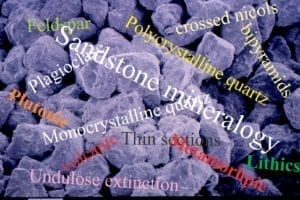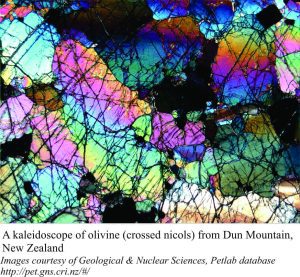This post is part of the How To… series – quartz mineralogy in sandstones
Classification of terrigenous sandstones depends on the identification of two main components: framework grains and matrix. Frameworks are represented by a QFL triad – quartz, feldspar and lithic fragments, where the proportion of each grain type is determined from thin section. Most classification schemes aggregate all types of quartz, feldspar and lithics into each end-member. This approach is sensible and easy to use.
But simply naming a sandstone (or any rock type for that matter) is not enough. We also want to know about its provenance, the sediment source or sources – was it a stable continent or active mountain belt, volcanic arc or ocean basin, perhaps a far-travelled terrane or tectonic sliver for which the only evidence is the collection of grains that have survived multiple cycles of attrition.
Teasing this information from the rocks requires us to delve into the mineralogy in greater detail. The simplest and cheapest way to do this is with thin sections and a polarizing microscope. We begin with the most common terrigenous component – quartz. Continue reading



